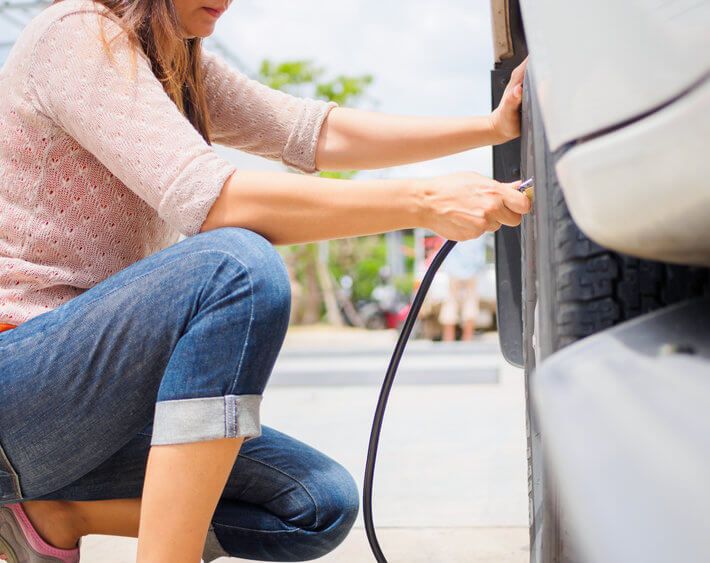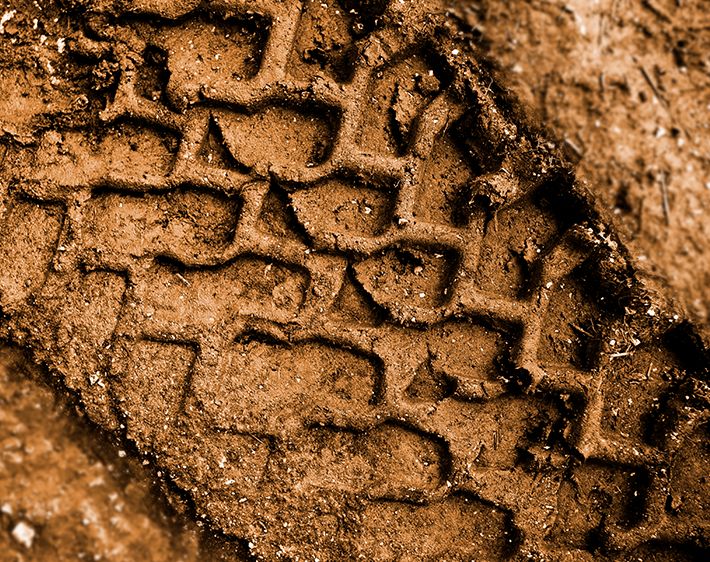Textbooks? Ordered. Bean bag chair? Packed! A safe vehicle? Time to double check. If your child is taking a car to college, there are a few additional things to consider on top of their dorm room necessities and campus parking permit. Walk through this maintenance checklist with your college-bound kid to make sure their car will be there for them when they need it most—even when you can't be.
1. Start with an inspection.
A complete vehicle inspection at your local Firestone Complete Auto Care is one of the best places to start, since the results can give you insight into problems both big and small.
Technicians will examine everything from the exhaust system to the timing belt and battery hoses. From here, they'll offer recommendations for getting your vehicle back into safe shape and in line with manufacturer specifications. The results of an inspection can also help you gauge when the car might need a repair or replacement over winter or spring break, and help you budget accordingly.
2. Check and change/refill essential fluids.
Let our technicians check your essential fluids during an inspection, or consult your owner's manual to learn how to check some of them on your own. When they’re running low or completely used up, the car a) won't run, b) can incur engine damage, or c) can be downright tough to drive.
A few of the most important fluids to pay attention to include: motor oil, radiator fluid, transmission fluid, power steering fluid, brake fluid, air conditioning coolant, and windshield wiper fluid. Some of these fluids are simple to check at home (like wiper fluid), while others require the expertise of a technician (like coolant). Making sure each of these fluids is in fresh, tip-top shape can help prepare your student's vehicle for whatever "tests" they put it through, whether it’s an overnight drive to find the state’s best doughnuts or a frigid drive home over winter break.
3. Test and clean the car’s battery.
There's nothing worse than a car that won't start, except perhaps a car that won't start on the morning of a major exam. Get a free battery test to find out how much "life" might be left in the battery or use our virtual car battery tester for a general sense of the battery’s life expectancy.
If the battery is still going strong, safely clean the terminals of debris or corrosion to help keep it that way. If the test reveals that the battery could call it quits any day now, invest in a new one for the health of the engine and your own peace of mind. The average car battery lasts about four years—the same amount of time it often takes to get a college degree!
4. Inspect all five tires.
Five? Yes, five tires, because you don't want to forget the spare! One of the best, and most cost-effective, ways to stay safe on the road is to monitor tire pressure and tread. Check that the tire pressure in each tire is at the recommended level and look for signs that you need new tires, like tread wear, damage, leaks, and bulges. Old, worn tires may not be able to perform as they were intended, which could pose a serious safety risk and increase the car’s chances of hydroplaning.
Also, consider whether run-flat tires might be best for your young driver. “For drivers (or parents) who would rather not have to risk traffic speeding by just feet away or being accosted by someone while dealing with a flat or blowout,” writes the Houston Chronicle, “consider vehicles that come with run-flat tires” or take the time to install them on any late-model car or crossover.
Install a set of DriveGuard run-flat tires on their car and your kiddo will be able to drive up to 50 miles at speeds of up to 50 MPH, even after a tire has been punctured or suffered a complete loss of air. That means more time to reach a safer place to stop, or more time to simply make it back home.
5. Give a crash course in car care.
"Two in three teens don't know how to change a flat tire, check or change the oil, or jumpstart a battery," reports U.S. News & World Report. "They're also unable to identify basic car parts or perform emergency roadside repairs." Give your college-bound driver a leg up on their fellow students and prepare them for the unexpected by teaching them about basic car care, including how to…
- Change a flat tire
- Check the oil level
- Jumpstart a dead battery
- Check and refill tire pressure
Every mile is a milestone, for both your car and your child. Equip your student for success and safety while they're away at college with a brain full of automotive know-how, a well-maintained set of wheels, and directions to their nearest Firestone Complete Auto Care. When they're stumped by a strange engine noise, in need of an oil change, or just need help checking their tire pressure, you can be sure we'll be there for them!



